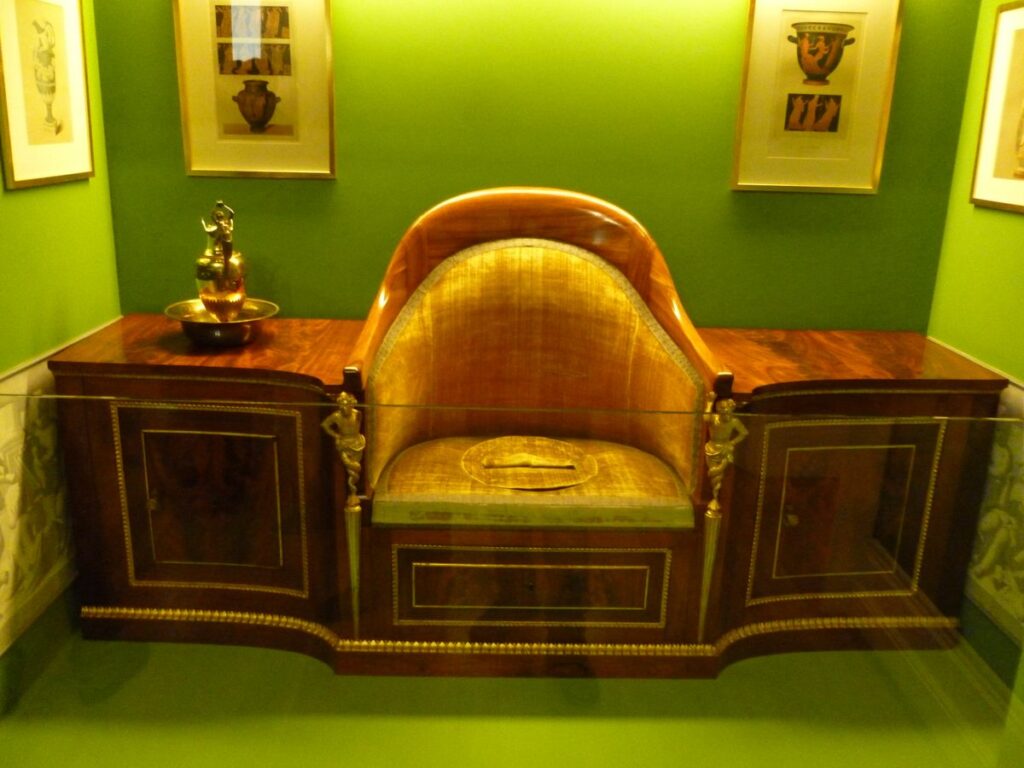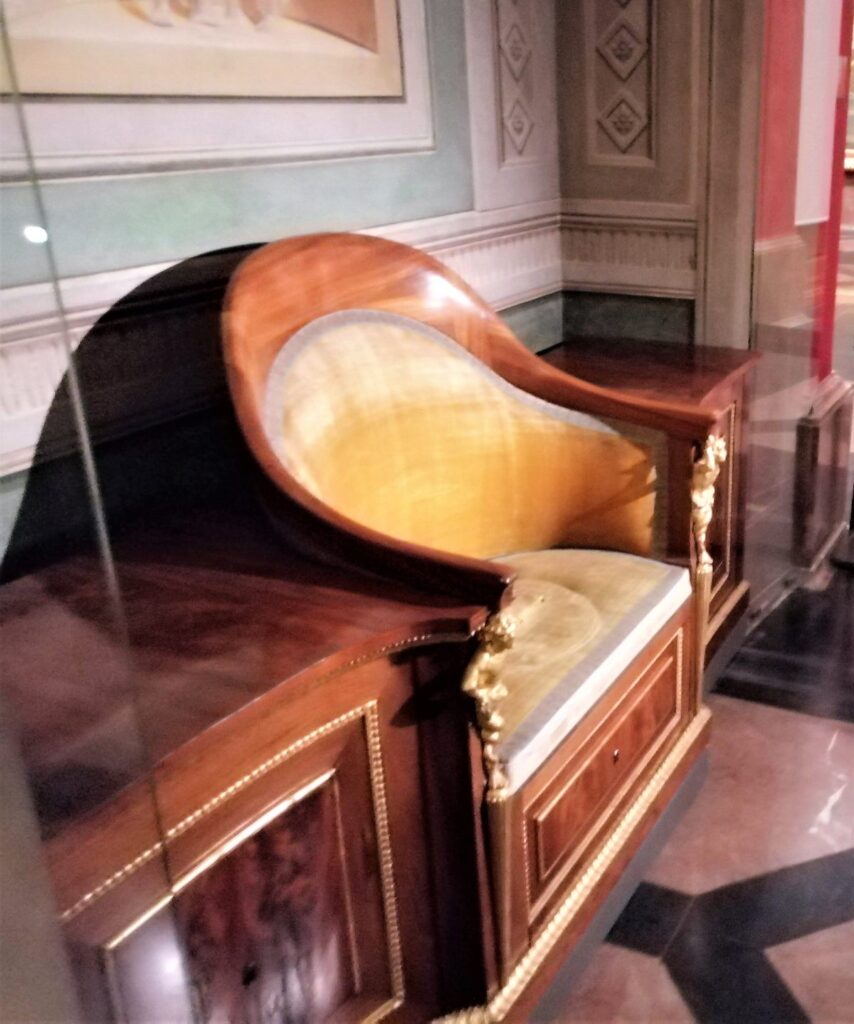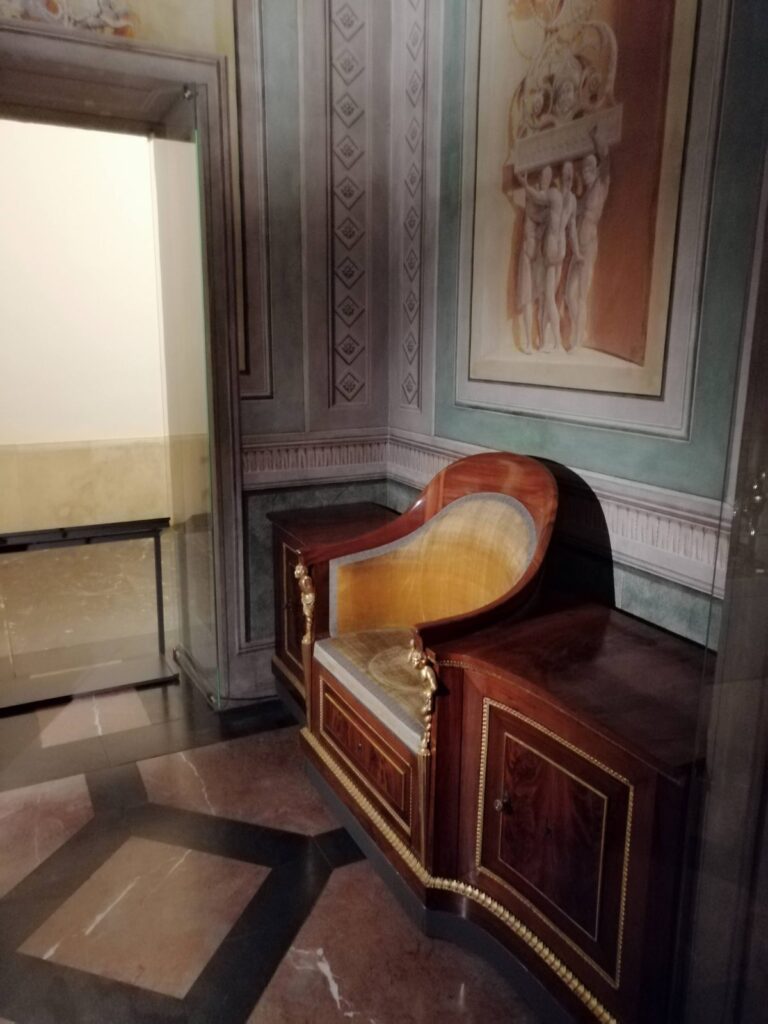His bathroom was reconstructed in 2019 for the 200th anniversary of the Prado Museum
According to this article, Ferdinand VII of Spain was typically referred to as “el Desired” (el Deseado) by his supporters. Yet, the 19th-century king was referred to by his enemies as el Rey Felón (literally, “the Criminal King”). Ferdinand VII was an absolutist and unscrupulous king who always had a coterie of sycophants at his side. His politics were primarily concerned with ensuring his own survival. His restoration of the Villanueva building, which housed the former Cabinet of Natural Sciences, into one of the finest art museums in the world in 1819, what is now known as the Prado Museum, is the only act for which we should be grateful.
The Prado was equipped with a bathroom in 1828 for the monarch and his household. Their Majesties’ Rest Cabinet was long maintained secret from the general people. In 2019 to celebrate the 200th anniversary of the building, the bathroom area was reconstructed in the museum’s original location, which is now room 39.



By recreating the cherry-toned colors of the walls from two centuries ago and collecting the majority of the paintings that hung on them, they tried to depict this room’s appearance as accurately as they could. There were 44 frames in total, including portraits like Louis-Michel van Loo’s The Family of Felipe V and pieces by Mengs and Tiepolo. The royals and their important guests had to have a place to go to the bathroom in a restroom that was worthy of its name. The original furnishings are still present in a tiny room (39A), along with a number of items used to groom his majesty.
A stunning silver aquamanile, two commodes from the Royal Porcelain Factory of La Moncloa (one for each gender), and a king’s toilet case filled with vibrant items like basins, glass glasses, toothbrushes, and more are also included.
The most intriguing piece of furniture in this room is an opulent latrine. The center section, which houses the toilet seat, is crafted of mahogany and covered with velvet. A piece below appears to be a drawer, but it is actually a lengthy door that opens just on one side, allowing access to a chamber pot that was removed by an attendant after usage.
One of the most significant master craftsmen of the Royal Workshops, cabinetmaker Ángel Maeso González, created this item, which was finished in 1830.

